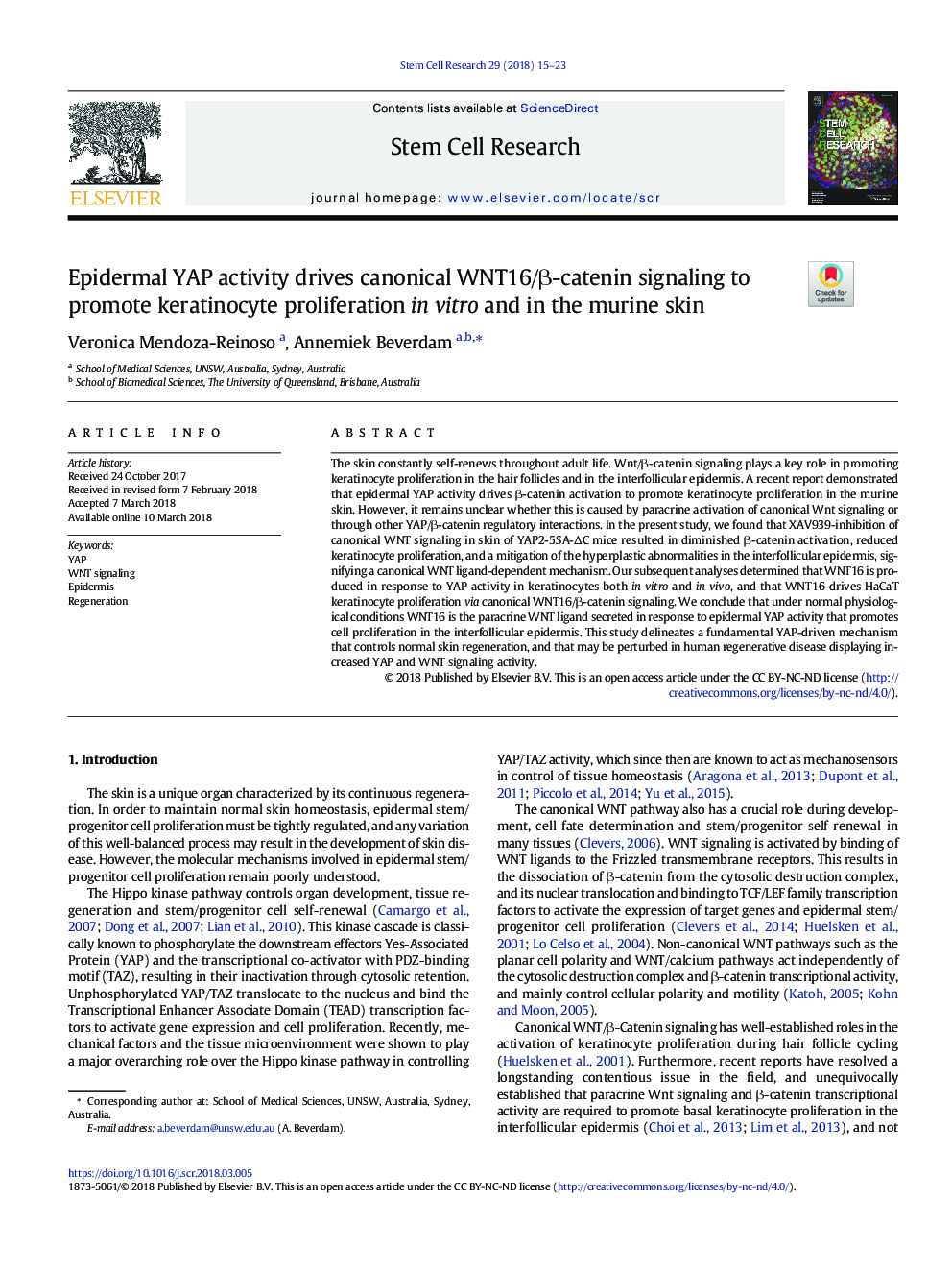| Article ID | Journal | Published Year | Pages | File Type |
|---|---|---|---|---|
| 8425169 | Stem Cell Research | 2018 | 9 Pages |
Abstract
The skin constantly self-renews throughout adult life. Wnt/β-catenin signaling plays a key role in promoting keratinocyte proliferation in the hair follicles and in the interfollicular epidermis. A recent report demonstrated that epidermal YAP activity drives β-catenin activation to promote keratinocyte proliferation in the murine skin. However, it remains unclear whether this is caused by paracrine activation of canonical Wnt signaling or through other YAP/β-catenin regulatory interactions. In the present study, we found that XAV939-inhibition of canonical WNT signaling in skin of YAP2-5SA-ÎC mice resulted in diminished β-catenin activation, reduced keratinocyte proliferation, and a mitigation of the hyperplastic abnormalities in the interfollicular epidermis, signifying a canonical WNT ligand-dependent mechanism. Our subsequent analyses determined that WNT16 is produced in response to YAP activity in keratinocytes both in vitro and in vivo, and that WNT16 drives HaCaT keratinocyte proliferation via canonical WNT16/β-catenin signaling. We conclude that under normal physiological conditions WNT16 is the paracrine WNT ligand secreted in response to epidermal YAP activity that promotes cell proliferation in the interfollicular epidermis. This study delineates a fundamental YAP-driven mechanism that controls normal skin regeneration, and that may be perturbed in human regenerative disease displaying increased YAP and WNT signaling activity.
Related Topics
Life Sciences
Biochemistry, Genetics and Molecular Biology
Biotechnology
Authors
Veronica Mendoza-Reinoso, Annemiek Beverdam,
